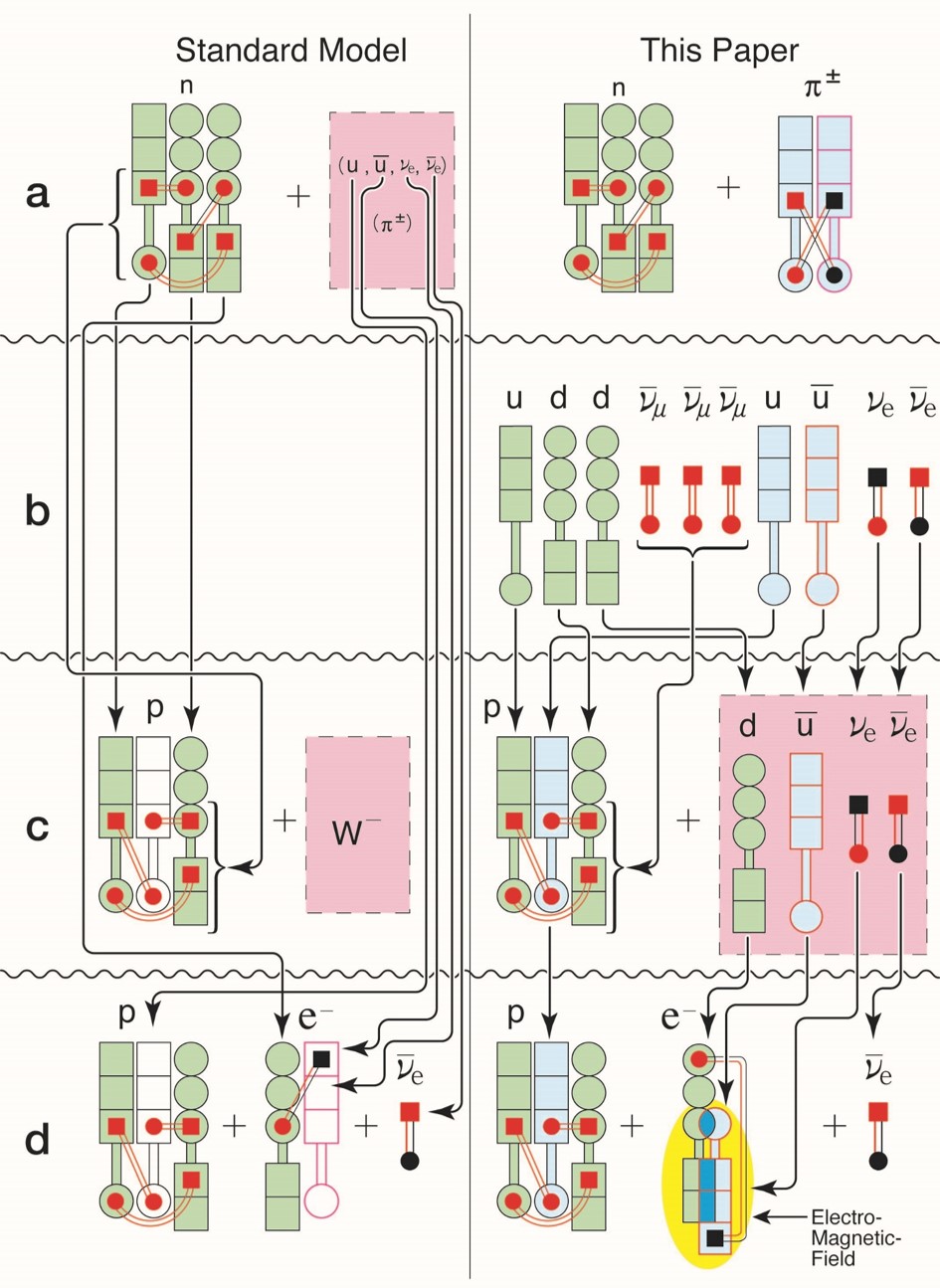M-4: The Emergence of Weak Interaction
Particle Physics
DOI:
https://doi.org/10.55672/hij2022pp108-114Keywords:
Development of the universe, Weak interaction, Strong interaction, nucleons group (p ,p ̅ , n, n ̅ ), π-on groupAbstract
The view of the Standard Model on the β decay of neutrons through weak interaction is that neutrons break down to form protons p and weak bosons W^- and finally into protons, electron, and anti-electron neutrinos. The three quarks (u,d,d) that compose neutrons are joined by strong interaction, so bonds formed by strong interaction supposedly cannot be broken by the weak interaction, which is far weaker than strong interaction. Nevertheless, neutrons do decay. Further, the three quarks (u,d,d) that form neutrons are fundamental particles, and it should not be possible for other fundamental particles to emerge from these three fundamental particles. Nevertheless, not only does (u,d,d) change into (u,u,d) but electrons and anti-electron-neutrinos, which are fundamental particles, also emerge. This must not have a double meaning. As shown here, there are multiple contradictions in the weak interaction of the Standard Model. In this paper, the weak interaction is mediated by the π-ons group that results from the working of strong interaction step 1 that was described in a previous paper and acts on the nucleons group (p, p ̅ ,n, n ̅ ) that resulted from step 2. In other words, at the point immediately prior to the emergence of weak interaction, all the particles that existed in the universe were used in order to make weak interaction emerge. The weak interaction in this paper refers to the strong interaction bonds composed of neutrons and π^±-ons first being dissolved by the strong interaction. As such, the reason why neutrons change to protons is just because the d-quark of the neutron is replaced with the u-quark of the π^±-on.
Downloads
References
[1] N. Ozawa, "M-3: The Emergence of Strong Interaction," Hyperscience International Journal, vol. 2, no. 3, pp. 91-96. doi: https://doi.org/10.55672/hij2022pp91-96
[2] B. Povh, K. Rith, C. Scholz, F. Zetsche, and W. Rodejohann, Teilchen und Kerne: eine Einführung in die physikalischen Konzepte. Springer-Verlag, 2013.
[3] N. Ozawa, "M-1: The Universe That Emerged and Developed in a Causal Manner," https://vixra.org/, vol. 2206, 2022.
[4] N. Ozawa, "M-2: Emergence of Quarks and Anti-Quarks " Hyperscience International Journal, vol. 2, no. 3, pp. 83-88. doi: https://doi.org/10.55672/hij2022pp83-88

Published
How to Cite
Issue
Section
License
Copyright (c) 2022 Hyperscience International Journal

This work is licensed under a Creative Commons Attribution-NonCommercial 4.0 International License.






 Google Scholar
Google Scholar  Crossref
Crossref  Scopus
Scopus  WorldCat
WorldCat  ORCID
ORCID  Scilit
Scilit  Mendeley
Mendeley  Internet Archive
Internet Archive 





